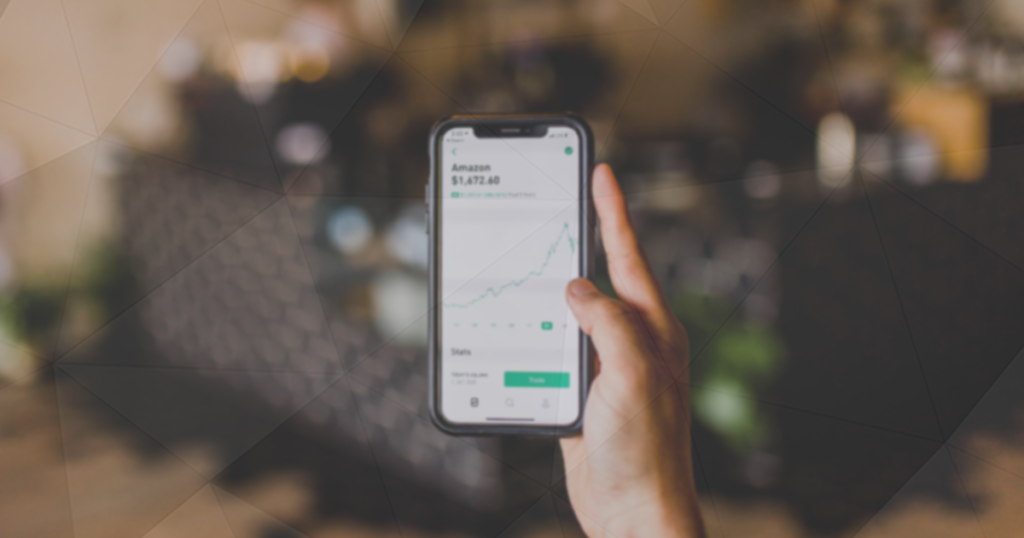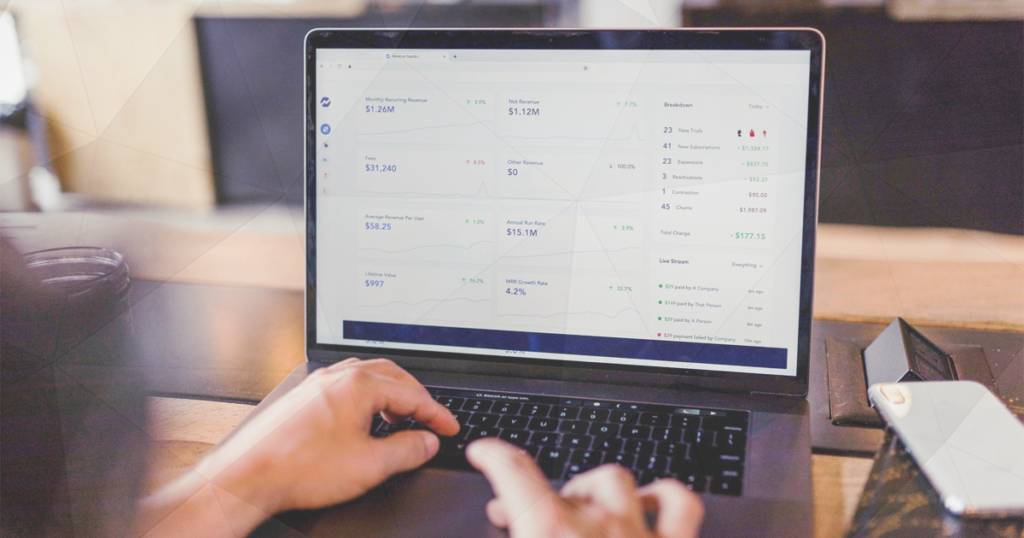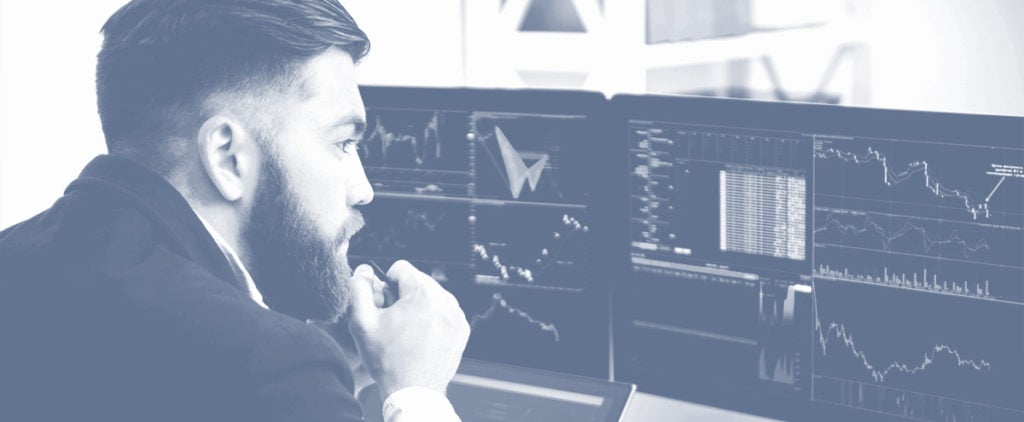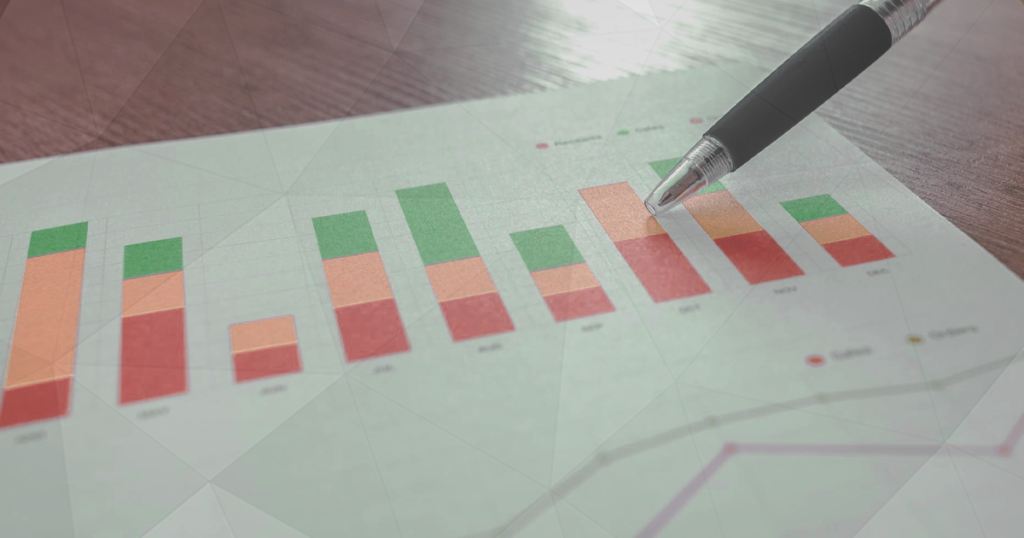What is Online Trading and How Does It Work?

Online trading allows you to trade on financial markets from the comfort of your home. All you need to start trading is a computer with internet access and a brokerage account.
Nevertheless, even though the entry barriers for trading have fallen considerably since the 1990s, markets haven’t changed much. They still offer plenty of profitable trading opportunities and pitfalls which can lead to large losses.
This article covers all you need to know to get started with online trading.
The Rise of Online Trading: A Brief History
Trading has been around us for centuries. In ancient times, people bartered agricultural goods and traded precious metals, but it has not been until the innovation and acceptance of money as a store of value that financial trading became available.
The first stock exchange was established in Amsterdam in 1602, today known as the Amsterdam Stock Exchange. The Dutch East India Company was the first company to issue stocks and bonds on the Amsterdam Stock Exchange which marked the formal beginning of trading in securities.
Currencies took a slightly different path than shares. For the most part of the 20th century, currencies were pegged to the value of the US dollar, which in turn was pegged to the value of gold with the Bretton Woods agreement. The agreement had the goal to control inflation and help rebuild the world after the devastating effects of World War II.
However, it became increasingly apparent that the fixed exchange rates set by the Bretton Woods agreement were not sustainable, which led to the fall of the agreement in the 1971-1973 period. After that, currencies have begun to freely fluctuate against each other based on the forces of supply and demand and speculative currency trading was born.
In those times, the big players in the market were banks, hedge funds, and other large market participants. It was not until the 1990s that small retail traders gained access to the market through the advancement in communication technologies and the internet boom. Since then, online trading has seen a steady rise in popularity with millions of traders worldwide.
Learn More: A Brief The History of the Forex Market
Getting Started with Trading: Here’s What You Need
To get started with online trading, all you need to have is a capable computer with internet access and a brokerage account. Most modern computers and laptops are up to the task to run popular trading platforms such as MetaTrader 4 or 5.
If you don’t have any problems watching YouTube videos on your computer in HD, it’s ready to be used for trading.
A broadband and robust internet connection is very important, as you don’t want to lose your internet access when trying to close or modify a trade.
Recently, many brokers have also developed mobile trading platforms which can be downloaded and run on a smartphone. Finally, the last thing you need is a brokerage account with an online broker. We’ll cover brokers in more detail further below.
What can be Traded Online?
Online brokers offer a variety of instruments that can be traded online. Here are the most popular you need to know about.
- Stocks and stock indices. Stocks, also known as shares or equity, represent ownership in the issuing corporation. If you want to buy a stock, you need to go with a regular stock broker. Stock brokers usually offer lower leverage than CFD brokers and have a higher minimum deposit requirement. Stock indices follow a group of stocks based on market capitalisation or industry sector and can be traded just like individual stocks. Short-selling is also often restricted by regular stock brokers but allowed when trading on CFDs.
- Currencies. Currencies are traded on the Forex market, which is short for Foreign Exchange. Unlike the stock market, the Forex market is an over-the-counter market, which means there’re no physical exchanges to trade currencies. Instead, currencies are traded during Forex trading sessions directly between banks, investors, hedge funds and other market participants. There are eight major currencies in the Forex market: the US dollar, Canadian dollar, British pound, euro, Swiss franc, Japanese yen, Australian dollar, and New Zealand dollar. If your analysis shows that a currency will rise in value, you would buy that currency (go “long”). Similarly, if you think that a currency can fall in value, you would sell that currency (go “short”). In online trading, currencies are usually traded as CFDs (Contracts for Difference), which means that online currency traders have access to high leverage and are able to short-sell a currency (profit when prices fall).
- Commodities. Commodities are also a popular trading asset. They include gold, silver, platinum, oil, wheat, natural gas and other commodities that are traded on financial markets. Commodities are a useful asset to diversify your portfolio or park your money, as certain precious metals (e.g. gold) tend to increase in value in times of financial crises and global economic slowdowns.
- Cryptocurrencies. With the recent cryptocurrency hype, many online brokers have started to include cryptocurrencies in their list of tradable assets. Bitcoin, Ethereum and Ripple are very popular among retail traders but bear in mind that the crypto-market can be extremely volatile at times and cause huge losses.
- CFDs. CFDs or Contracts for Difference are contracts that track the price of the underlying asset. When you buy a CFD on oil or the Japanese yen, you don’t actually own the underlying asset. All the CFD does is tracking the price of an asset. When you buy or sell a CFD, you make a profit in the difference between the entry price and the closing price if the market goes in your favour. However, if your analysis proves wrong, you’ll make a loss. CFDs are very popular among retail online traders as they come with certain advantages.
- Leverage – CFDs often come with high leverage, which allows traders to open much larger position sizes than their trading account would otherwise allow. To open a trade on leverage, your broker will allocate a small portion of your trading account as the collateral for the leveraged trade, also known as “margin”. However, trading on leverage doesn’t come without risks, as leverage magnifies both your profits and losses.
-
- Short-selling – When trading CFDs, traders can short-sell a financial instrument and profit when prices are falling. When short-selling, a trader borrows the financial instrument from a broker and sells it at the current market price. When prices fall, the trader buys the financial instrument at the market for a lower price and returns the loan to his broker, making a profit from the difference between the selling and buying price.
What is a Broker?
To start trading on the financial markets, you need to open a brokerage account first. Your broker is your window to the world of financial markets. We recommend CoreSpreads as they offer industry leading, tight spreads. You can sign up free here:
Each time you open a buy or sell position, the trading order is sent to your broker through your trading platform and is matched with an opposite order. When you buy, someone needs to sell and vice-versa. Your broker acts as the middleman for the transaction, executes your order and charges a small commission for its services.
There are hundreds of brokers available to choose from. Some of them try to attract new traders by offering very high leverage, a wide range of tradeable instruments or competitive trading costs.
After you open a live trading account with a broker, you’ll need to fund your account to start trading. Deposits can be made in a variety of ways, but most brokers accept bank wires, credit/debit cards and online payment providers, such as PayPal, Skrill, and Payoneer.
Here’s a quick checklist when picking a broker.
- Regulation. The most important consideration when choosing a broker is its regulation. Always trade with a regulated and secure broker. Popular regulatory authorities include the NFA in the US, the FCA in the UK and CySEC in the EU.
To find out whether a broker is regulated or not, go to its website and look for its license number and regulatory body which are usually located in the “About us” tab.
- Trading instruments.When opening a broker account, make sure that the broker includes all trading instruments that you want to trade.
Most brokers offer a range of instruments that include everything from popular stocks, stock indices, commodities, currency pairs to bonds and cryptocurrencies. Still, there’re often slight differences in the number of offered instruments between different brokers.
Read: Essential Guide to Broker Platforms (Which One to Choose!?)
What You Need to Know About Trading Costs
Depending on your trading style, trading costs can become quite sizeable. Shorter-term traders, such as scalpers and day traders, usually pay more in trading commissions than longer-term traders. The average trading cost of 15 popular stock brokers is around $8.90 per trade, according to ValuePenguin.
However, the cost can rise considerably if you choose to place a broker-assisted trade, such as when you don’t have access to the internet or want to trade a specialty security. In these cases, trading costs can reach between $30 and $50 per trade.
Some stock brokers don’t follow the cost-per-trade model but charge you a smaller cost for each traded share, and there can also be inactivity fees if you leave your trading account inactive for a period of time.
What about Forex Brokers?
Forex brokers charge trading costs based on the current market spread for a currency pair, which is the difference between the bid and ask price. Under normal circumstances, the bid price is always lower than the ask price, which means that buyers want to buy at a lower price than sellers are willing to sell.
Eventually, when the bid and ask price meet, a trade can be executed. Bid/ask spreads can start as low as 1 pip for major pairs to dozens of pips for exotic and less-liquid pairs (a pip is the fourth decimal of an exchange rate).
Spreads also depend on the current market environment and usually widen after important news releases or when markets are extremely volatile. Bear in mind that a Forex broker may also charge a fee for holding trades overnight or financing fees when trading on leverage.
I recommend you pick a trading style that suits your personality
Before placing your first trade, it’s important to know about the different trading styles that will shape you as a trader. In general, trading styles can be grouped into short-term and long-term styles.
The short term
Short-term traders like fast-paced trading environments and trade every day. They base their trading decisions mostly on technical analysis, manage their trades actively and don’t hold trades overnight. Common timeframes that short-term traders base their trading decisions on range from as low as 1-minute for scalpers to 1-hour for day traders.
The long term
On the other side, longer-term traders combine technicals and fundamentals and hold their trades open for days, weeks or even months. Popular longer-term trading styles include swing and position trading.
While beginners feel often attracted to short-term styles, such as scalping and day trading, it’s important to note that there’re considerable risks associated with these styles. Trading costs are one of them, as short-term traders often face very high trading costs because of the large number of trades opened during a day.
Longer-term traders have lower trading costs as they don’t trade as often. Furthermore, short-term traders need to have lightning-fast reflexes as scalping and day trading require to make trading decisions in a matter of seconds or minutes.
Whichever trading style you choose, it’s a good decision to start with a longer-term style which provides you more time to analyse the market and make decisions. Once you become consistently profitable with long-term trading, you may consider getting your feet wet with scalping or day trading.
OK I’m ready, what are the best days to trade?
Online trading provides you access to financial markets around the clock, wherever you’re. Nevertheless, not all markets are the same. If you’re trading stocks, you’ll be able to trade only during the open market hours of a stock exchange.
Also, stocks tend to fall on Monday, which is known as the Monday Effect. Why this happens is still unclear. Some analysts argue that companies like to release bad news late on Friday or over the weekend in hopes that the market will have enough time to absorb the negative effects.
Stocks also tend to rise early in the morning. Historically, it would be a profitable trading approach simply to buy a basket of stocks or a stock index before 10 a.m. and selling it the following day.
The Forex market is quite different from the stock market because currencies are traded around the clock. The US dollar is the most-traded currency in Forex and is included in more than 80% of all Forex transactions. This means that any US news can have a significant impact on the market.
Most important US market reports are released around 8:30 a.m. EST and can produce high volatility after the release. While stock traders pay a lot of attention to earnings reports, Forex traders follow macro-economic reports, such as non-farm payrolls (NFP).
Released each first Friday of the month, the NFP report shows how many new jobs have been added in the US economy, excluding farming and governmental jobs.
When trading Forex, bear in mind that short-term trends tend to reverse on Friday because of profit-taking activities of market participants who don’t want to hold their trades open over the weekend.
Also, despite being a market that is open around the clock, not all trading hours offer the same trading opportunities. The New York and London trading sessions usually offer the highest liquidity, fast price-movements, and lower trading costs.
Avoid trading immediately at the beginning of the Sydney trading session, as the trading volume can be quite low and spreads can widen significantly.
Final Words
Online trading has been around us for many years. It offers a convenient, fast and cost-efficient way to trade on major financial markets from the comfort of your home.
Most brokers offer trading on stocks, stock indices, commodities, and currencies, but some of them have also added cryptocurrencies recently. When choosing a broker, pay attention to deposit money only with a regulated broker.
Trading costs should also be a consideration if you want to trade with short-term trading styles, such as scalping or day trading. Stock brokers usually charge a flat-fee per trade, which with some discount brokers can be as low as $5. However, bear in mind that the industry average fee per trade is around $8.90, with some brokers charging a fee per each traded share instead of per trade. In Forex, brokers charge the spread, which is the difference between the bid and ask price.
Finally, if you’re just getting started, make sure to learn as much as you can early in your trading career. We’ve listed some popular websites above. Prepare for hours of chart analysing, arm yourself with patience and discipline and you’ll able to become a consistent and successful trader.





